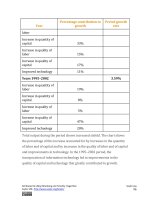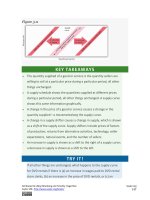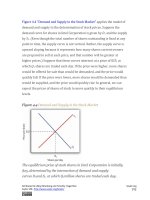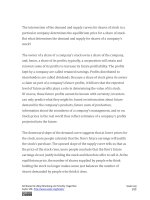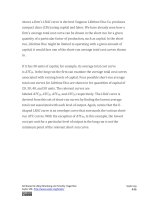Authors libby rittenberg 726
Bạn đang xem bản rút gọn của tài liệu. Xem và tải ngay bản đầy đủ của tài liệu tại đây (492.54 KB, 1 trang )
13.4 Review and Practice
Summary
Time is the complicating factor when we analyze capital and natural
resources. Because current choices affect the future stocks of both
resources, we must take those future consequences into account. And
because a payment in the future is worth less than an equal payment
today, we need to convert the dollar value of future consequences to
present value. We determine the present value of a future payment by
dividing the amount of that payment by (1 + r)n, where ris the interest rate
and n is the number of years until the payment will occur. The present
value of a given future value is smaller at higher values of n and at higher
interest rates.
Interest rates are determined in the market for loanable funds. The
demand for loanable funds is derived from the demand for capital. At
lower interest rates, the quantity of capital demanded increases. This, in
turn, leads to an increase in the demand for loanable funds. In the
aggregate, the supply curve of loanable funds is likely to be upwardsloping.
We assume that firms determine whether to acquire an additional unit of
capital by (NPV) of the asset. When NPV equals zero, the present value of
capital’s marginal revenue product equals the present value of its marginal
factor cost. The demand curve for capital shows the quantity of capital
demanded at each interest rate. Among the factors that shift the demand
curve for capital are changes in expectations, new technology, change in
demands for goods and services, and change in relative factor prices.
Attributed to Libby Rittenberg and Timothy Tregarthen
Saylor URL: />
Saylor.org
726
